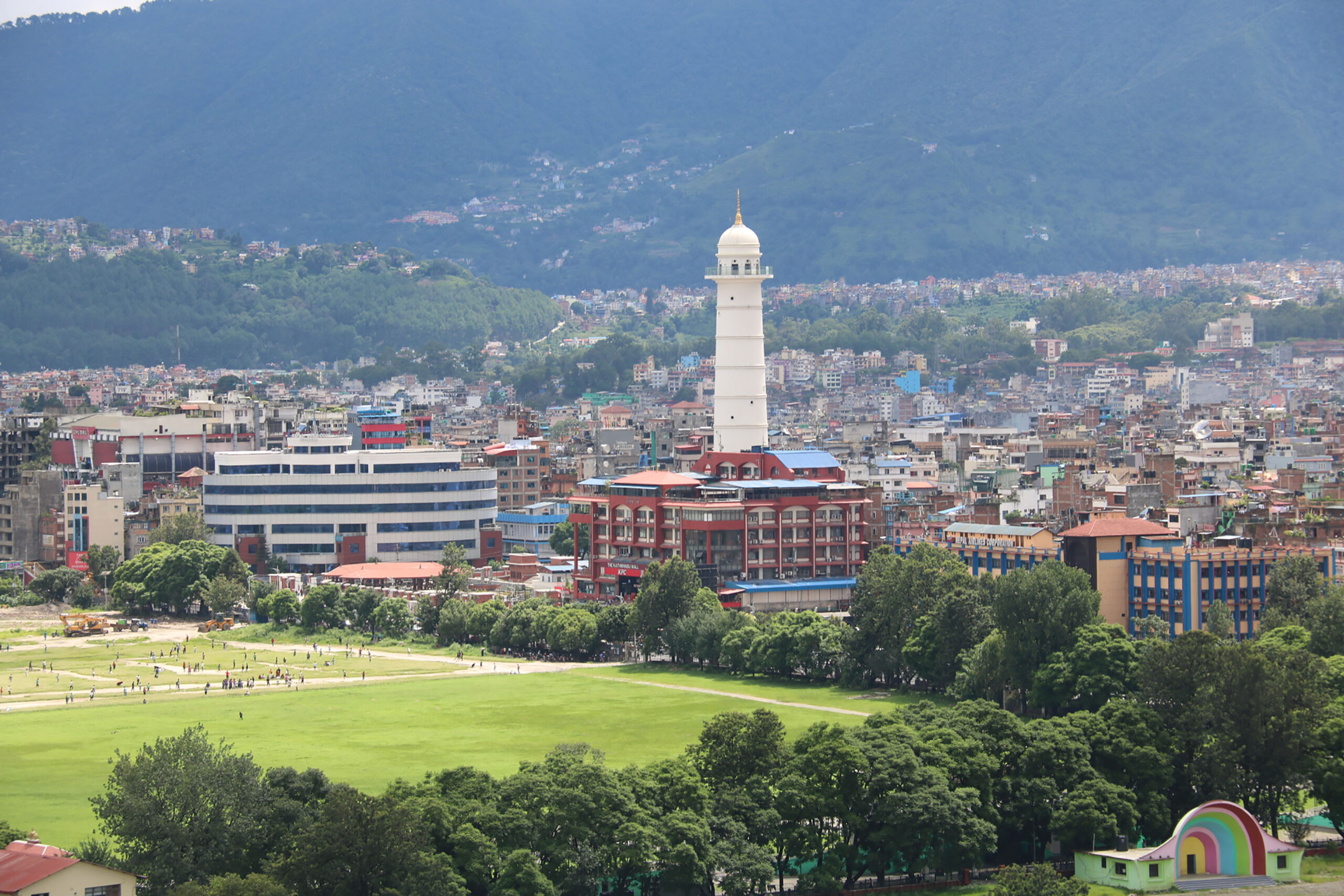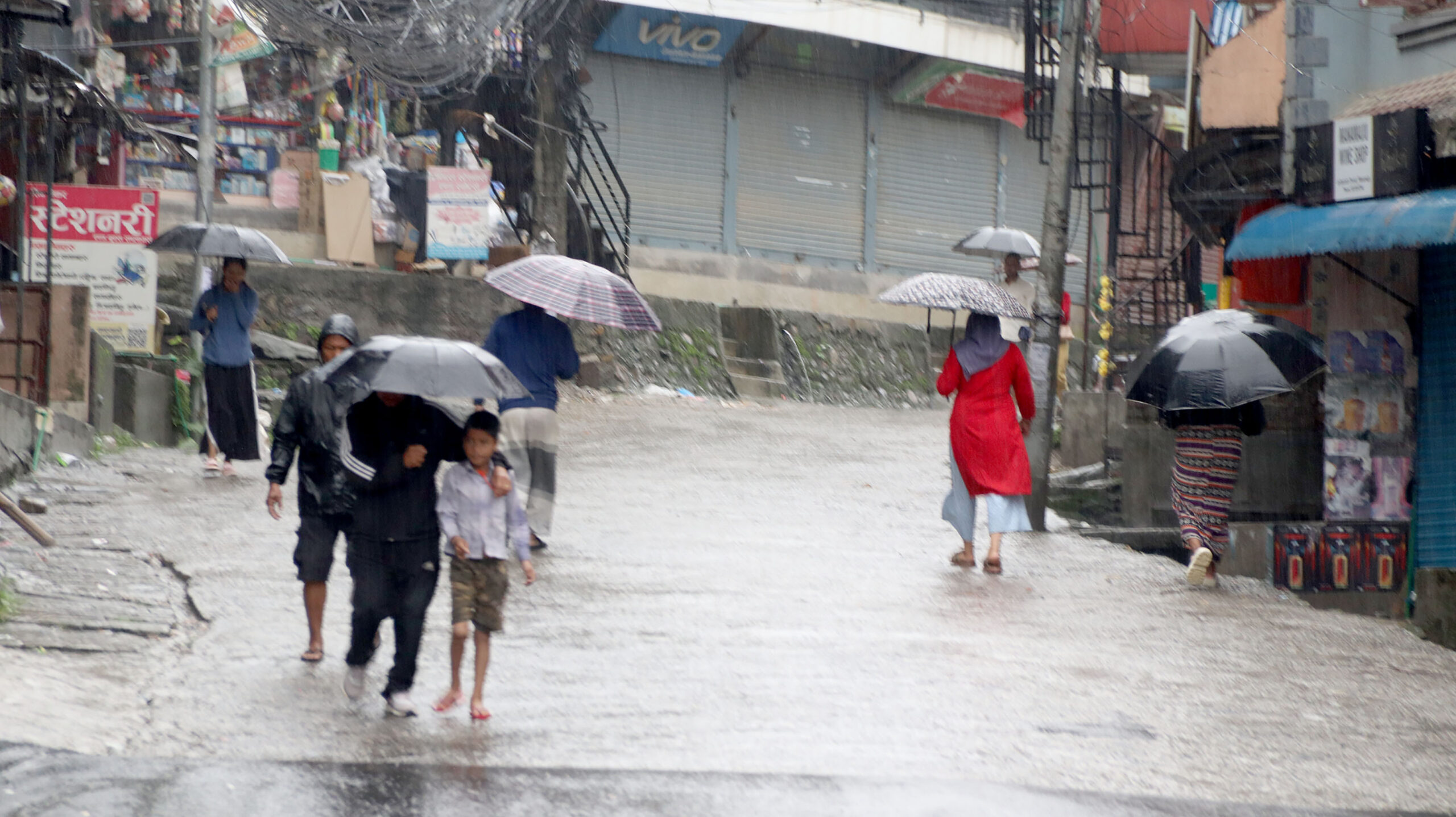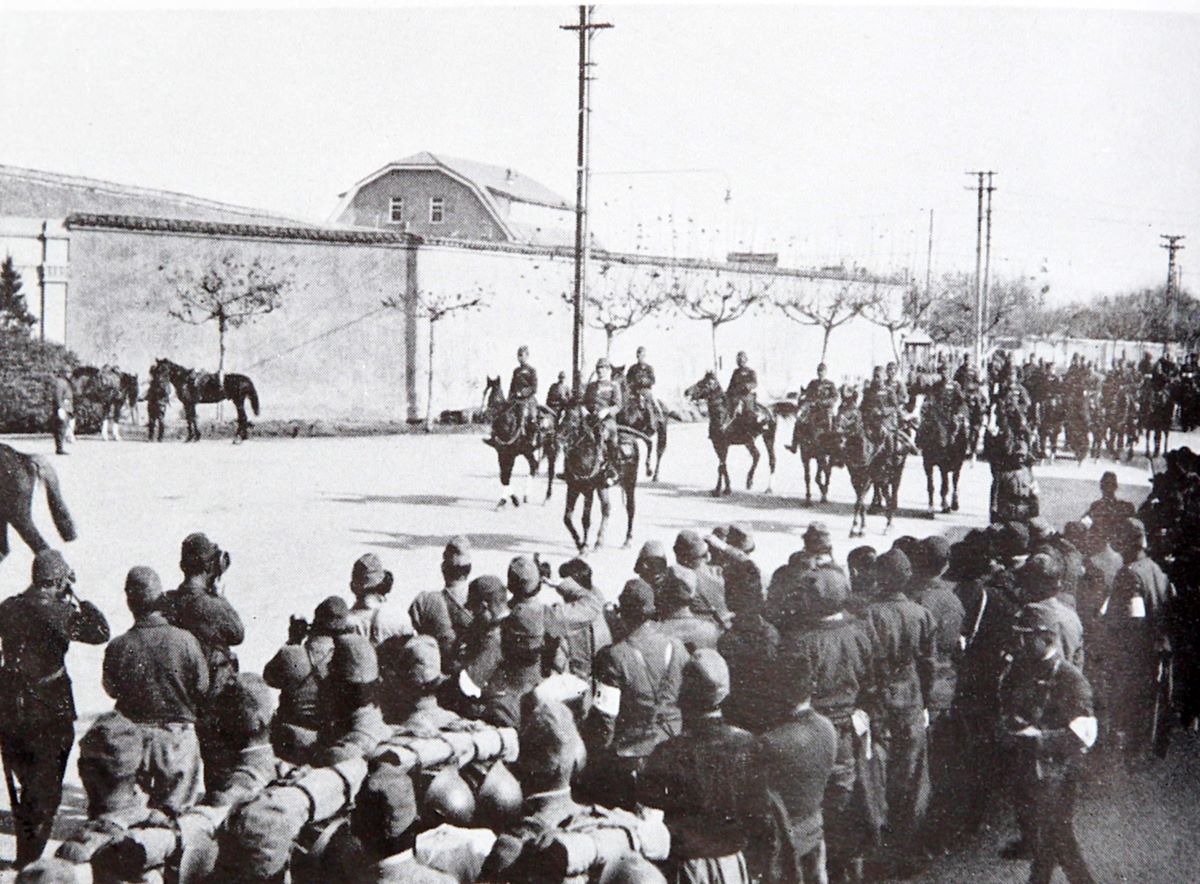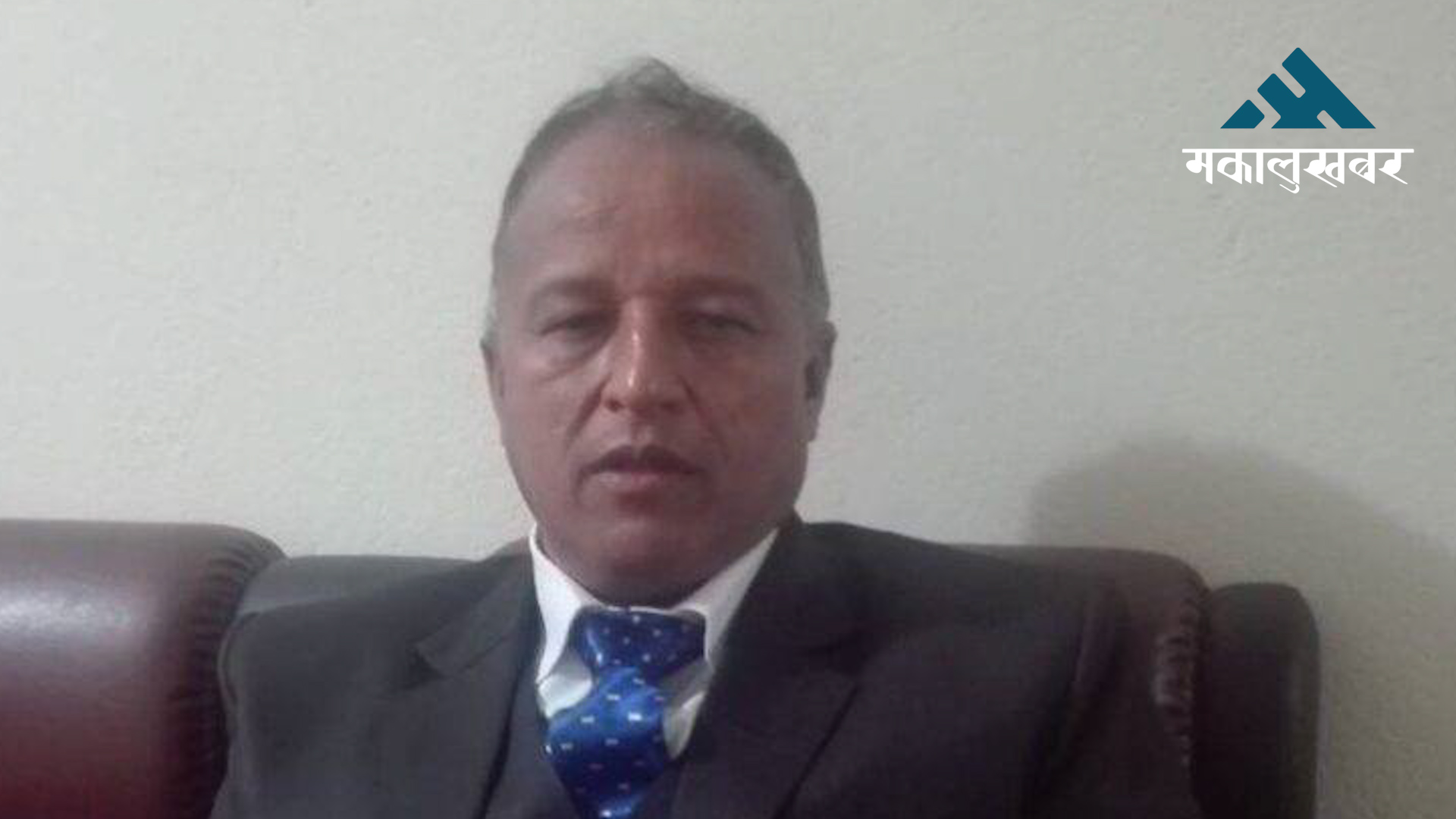Newly rebuilt Dharahara attracts excited visitors
Looking out over the valley, Sunar pointed to nearby Tundikhel and noted that there was still some space left for future construction.

KATHMANDU: Darsan Sunar, who had traveled from Jumla to Kathmandu to visit his daughter studying in the city, was filled with a strong desire to see the newly rebuilt Dharahara.
At over 70 years old, he had heard many stories about the immense height of the Dharahara, with people saying that the tall tower was so high that one’s hat might fall off when standing beneath it.
Naturally, his curiosity and excitement grew, prompting him to make a visit to the famous landmark.
Accompanied by his daughter, Sunar made his way to Sundhara, where the impressive structure stood towering in front of him.
Upon seeing it, he was astonished, remarking that it was the tallest building he had ever encountered.
“This is the first time I have come to Kathmandu, and when I climbed to the top of the Dharahara, it felt like a dream,” he said with amazement. “Wow, I can see the entire city of Kathmandu from up here! The houses are so closely packed, there’s hardly any space left for a mustard seed to fit between them.”
Looking out over the valley, Sunar pointed to nearby Tundikhel and noted that there was still some space left for future construction.
Returning to his village after his visit, he was eager to share the experience with others, telling them all about the mighty Dharahara.
His daughter, Deepakali Sunar, also had her dream fulfilled by reaching the top of the tower, a dream that was delayed by the 2015 earthquake, which destroyed the original structure.
Deepakali, who had been hoping to climb the Dharahara for years, remembered the devastation when the earthquake struck. “When I heard that the earthquake had destroyed the Dharahara, I thought I would never be able to climb it,” she shared. “But now, a beautiful new Dharahara has been rebuilt. I’m so happy that my wish has finally come true.”
Having heard so much about the Dharahara, Deepakali had seen images and videos of it through various media, but nothing compared to experiencing it firsthand. Standing at the top and looking out over the city, she was overwhelmed with joy. “I’m also happy for my father, as his dream of climbing the Dharahara has come true as well,” she added, smiling.
The newly reconstructed Dharahara has quickly become a major tourist attraction, drawing thousands of visitors from across the country and beyond.
Located in the heart of Kathmandu, this iconic historical landmark continues to capture the imagination of all who visit. Its significance is not only historical but also symbolic of Nepal’s resilience, emerging stronger after the earthquake. The Dharahara is now a blend of modernity and history, serving as a focal point for both locals and international tourists.
For Sita Maya Tamang, a visitor from Solukhumbu, this was her first time climbing the Dharahara after its reconstruction. She recalled feeling uncertain about ever being able to do so after the earthquake. “I came to Kathmandu for the first time and thought I would never get to climb the Dharahara after it was destroyed,” she said. “But now, it has been rebuilt so beautifully, and I’m thrilled to be able to climb it.”
Similarly, Parvati KC, originally from Dolakha but now residing in Lokanthali, Bhaktapur, also made the trip to Sundhara early in the morning to climb the Dharahara. “I had to wait in line for almost three hours to get my ticket,” she explained. “I had climbed the old Dharahara before the earthquake, but after it was destroyed, I wasn’t sure when I would get the chance to climb the new one. I’m so happy it’s finally happening today.”
Tirth Bahadur Thapa, from Gorkha and now living in Swayambhu, also shared his excitement. “Even though I had to pay for my ticket, I’m happy to have the chance to climb the Dharahara,” he said. “There was a long line, and I was worried I might not get my turn, but now I’m here, and it’s worth the wait.”
The Dharahara continues to attract people from all walks of life, each eager to enjoy the panoramic views from the top of the tower.
However, many visitors have also expressed their wish that the entrance fee could be waived, at least for certain groups. Some people have suggested that senior citizens, people with disabilities, and low-income individuals should be offered free or discounted tickets to make the landmark more accessible to all.
Machakaji Maharjan, the Director General of the Department of Urban Development and Building Construction, responded to such requests by explaining that it is not feasible to keep the Dharahara open for free. He clarified that from Sunday onward, a fee would be required for entrance to the Dharahara, citing the need for sustainable management. “To properly manage the Dharahara, we have to charge an entrance fee, just like similar landmarks around the world,” he stated. “Even with the fee, the number of visitors has not decreased.”
Prakash Aryal, the Chief of the Central Project Implementation Unit under the same department, confirmed that around 1,000 people visited the Dharahara just last Monday. “Since we started charging a fee, we have to issue tickets, so it’s not as simple as before, but the number of visitors remains high,” he noted.
The history of the Dharahara dates back to 1832, when it was first built by Prime Minister Bhimsen Thapa in honor of Queen Tripurasundari Devi. The tower was destroyed by the 1934 earthquake and later rebuilt in 1956 by Prime Minister Juddha Shumsher, though its height was reduced from 11 stories to 9.
In the aftermath of the 2015 earthquake, the Dharahara was completely destroyed, but nearly nine years later, it has been reconstructed and reopened to the public.
New Entrance Fees for the Dharahara
The Ministry of Urban Development has announced that a 50% discount will be given on the entrance fee for students, senior citizens, and people with disabilities.
Initially, the Dharahara was opened to the public for free as a trial, but from Sunday onwards, it has officially begun operating with an entrance fee. The standard entry fee is set at Rs 200 per person.
For students, senior citizens, and people with disabilities, the fee is reduced to Rs 100. Visitors from SAARC countries will pay Rs 500, while tourists from other countries will be charged Rs 1,000.
Additionally, the parking fee for four-wheelers is set at Rs 20 per hour, while two-wheelers will be charged Rs 10 per hour. There is also a Rs 50 entry fee for those wishing to access the Dharahara complex.
The Ministry has also established rates for commercial activities at the Dharahara.
Advertising on the pillar of the Dharahara will cost Rs 5,000 per hour, while filming commercial videos is also priced at Rs 5,000 per hour. Photography will be charged at Rs 1,000 per hour.
Despite the fees, the Dharahara continues to draw visitors in large numbers, with people from all over the world eager to see the spectacular views from the top.
This iconic structure, a symbol of Nepal’s history, resilience, and progress, remains a must-visit destination for anyone traveling to Kathmandu.










